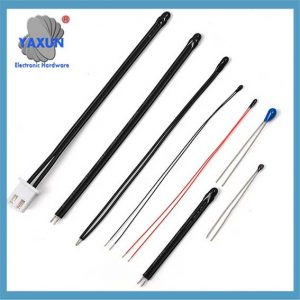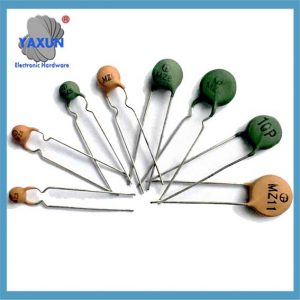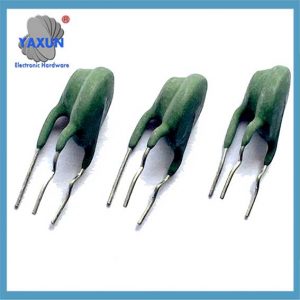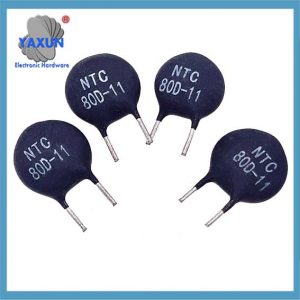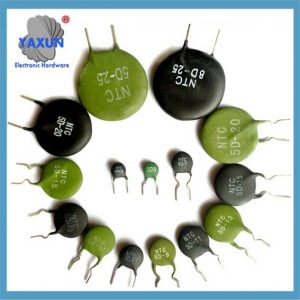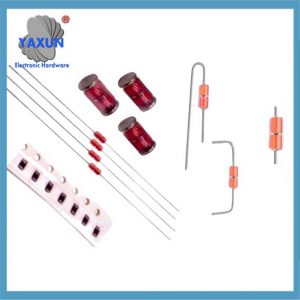Termistores são resistores especiais cujo valor de resistência muda com a temperatura. Este tipo de resistor é amplamente utilizado em várias detecção de temperatura, Controle de temperatura, proteção térmica e outras ocasiões. Compreender os princípios básicos dos termistores e como julgar sua qualidade é muito necessária para entusiastas ou trabalhadores eletrônicos em indústrias relacionadas.
O que é um termistor?
Um termistor é um resistor cujo valor de resistência muda com a temperatura e é usado para detecção de temperatura, controle e proteção térmica. Para julgar se um termistor é bom ou ruim, você precisa verificar a aparência, valor de resistência, mudança de resistência e velocidade de resposta. Ao selecionar e usar termistores, Você precisa considerar os cenários e condições de aplicação, Evite ambientes severos, e siga as especificações operacionais.
Primeiro, Vamos entender os princípios básicos dos termistores. O valor de resistência de um termistor muda com a temperatura, o que o torna um sensor de temperatura muito sensível. De acordo com as características do valor da resistência que muda com a temperatura, Os termistores podem ser divididos em dois tipos: Termistores de coeficiente de temperatura positivos (PTC) e termistores de coeficiente de temperatura negativos (NTC). O valor de resistência de um termistor de coeficiente de temperatura positivo aumenta com o aumento da temperatura, Enquanto o valor de resistência de um termistor de coeficiente de temperatura negativo diminui com o aumento da temperatura. Essa característica de mudança de resistência permite que os termistores desempenhem um papel importante na medição da temperatura, Controle de temperatura, Proteção de superaquecimento e outros campos.
Então, Como julgar a qualidade de um termistor? Podemos julgá -lo dos seguintes aspectos:
1. Verifique a aparência do termistor. Um bom termistor deve ter uma aparência interessante, sem dano, e sem oxidação nos pinos. Se o termistor tiver danos ou oxidação nos pinos, É provável que tenha sido danificado ou envelhecido.
2. Use um multímetro para detectar a resistência do termistor. À temperatura ambiente, A resistência do termistor detectada por um multímetro deve ser consistente com o valor nominal. Se a resistência for muito grande ou muito pequena, É provável que o termistor esteja danificado ou tenha um desempenho ruim.
3. Detecte a mudança na resistência do termistor aquecendo. Para um termocor de coeficiente de temperatura negativo (NTC), sua resistência deve diminuir quando a temperatura aumentar. Para termistores de coeficiente de temperatura positivos (PTCs), sua resistência deve aumentar quando a temperatura aumentar. Se a mudança de resistência do termistor não estiver em conformidade com esta regra durante o processo de aquecimento, É provável que o termistor esteja danificado ou tenha um desempenho ruim.
4. Verifique a velocidade de resposta do termistor. Um bom termistor deve ter uma velocidade de resposta rápida, aquilo é, Quando a temperatura muda, sua resistência pode reagir rapidamente. Se o termistor responder muito lentamente, Pode ser que seu desempenho seja ruim ou envelhecido.
Resumindo, julgar a qualidade dos termistores requer consideração abrangente da aparência, resistência, mudança de resistência, e velocidade de resposta. Para diferentes tipos de termistores, O método de julgamento também é diferente. Em aplicações reais, Também precisamos selecionar o tipo e o modelo apropriados do termistor de acordo com os cenários e requisitos de aplicação específicos para garantir sua operação normal e estabilidade a longo prazo.
Além disso, Também precisamos prestar atenção ao ambiente de uso e às condições do termistor. Por exemplo, Os termistores devem evitar serem usados em ambientes agressivos, como alta temperatura, alta umidade, e fortes campos magnéticos para evitar afetar seu desempenho e estabilidade. Ao mesmo tempo, Ao instalar e usar termistores, Também devemos seguir as especificações operacionais relevantes e os requisitos de segurança para garantir que eles funcionem com segurança e confiabilidade.
Resumidamente, Compreender os princípios básicos dos termistores e como julgar sua qualidade é muito importante para entusiastas ou trabalhadores eletrônicos em indústrias relacionadas. Ao selecionar e usar razoavelmente os termistores, Podemos realizar melhor funções como a detecção de temperatura, Controle de temperatura, e proteção térmica, Fornecendo fortes garantias para a operação segura e estável de vários dispositivos eletrônicos.
 English
English العربية
العربية Български
Български 粤语
粤语 中文(简体)
中文(简体) 中文(漢字)
中文(漢字) Nederlands
Nederlands Suomi
Suomi Français
Français Deutsch
Deutsch Ελληνικά
Ελληνικά Magyar
Magyar Italiano
Italiano 日本語
日本語 한국어
한국어 Polski
Polski Português
Português Română
Română Русский
Русский Slovenščina
Slovenščina Español
Español Svenska
Svenska ภาษาไทย
ภาษาไทย Türkçe
Türkçe Tiếng Việt
Tiếng Việt

